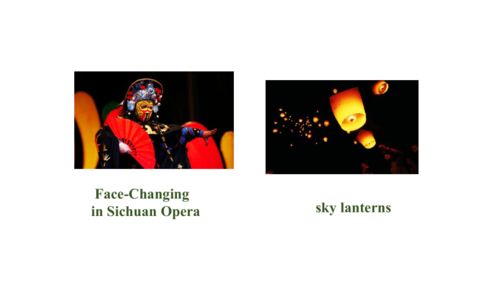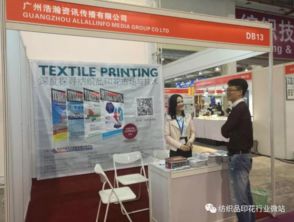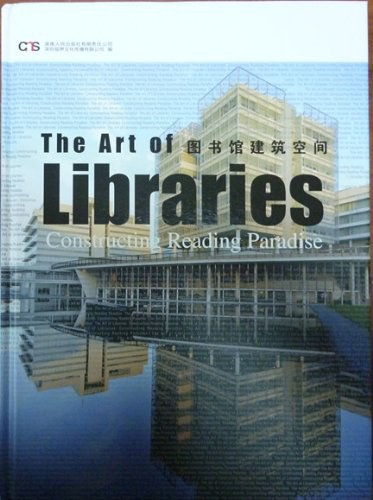Exploring the Industrial Splendor of Chinas Textile Capitals
China's textile capitals are not only the epitome of China's manufacturing prowess but also embody a unique industrial splendor. These cities, renowned for their textile industry, have been instrumental in shaping the world's textile industry. The textile sector in these cities has played a pivotal role in boosting local economies, creating employment opportunities, and fostering innovation in the field. The textile capitals have become hubs of technological advancements and global collaborations, showcasing the power of textile manufacturing in driving economic growth worldwide. Through an exploration of these cities, one gains a deeper understanding of China's role in the global textile industry and its impact on the world economy.
I. Introduction to China's Textile Capitals The textile industry, with its vast array of fabrics and materials, is one of China's most vital sectors. It plays a pivotal role in the national economy, contributing significantly to employment, export revenue, and foreign exchange earnings. The textile capitals are not just manufacturing hubs; they are cultural landmarks and economic powerhouses, where tradition meets modernity.
II. Overview of the Textile Industry in Mainland China Mainland China's textile industry spans across several provinces, each boasting its distinct characteristics and contributions to the national output. Here's a brief overview:

Guangdong Province
- Known for its vibrant colors and advanced technology, Guangdong leads China’s textile industry.
- The province has established numerous factories specializing in garments, footwear, and home textiles.
- The city of Guangzhou is a major center for global trade in textiles, attracting multinational corporations.
Shandong Province
- Home to a substantial number of textile factories, especially in silk production.
- The province is also famous for its quality handknitted goods and traditional weaving techniques.
- Shandong has been recognized as a leader in sustainable textile practices.
Jiangsu Province
- A hub for high-tech textile industries, particularly in the development of eco-friendly materials and dyes.
- The province boasts a strong presence in the garment industry, known for its exquisite workmanship and fashion-forward designs.
- Jiangsu is also an important producer of technical textile products used in various fields.
III. The Impact of Technological Advancements on Textile Industry Technological advancements have revolutionized the textile industry, making it more efficient, environmentally friendly, and competitive globally. Here are some examples:
-
Digitalization: With the rise of digital technologies such as computer-aided design (CAD), robotics, and artificial intelligence (AI), the textile industry has become more streamlined and precise. This has led to improved product quality and enhanced productivity.
-
Green Technology: Sustainable practices such as using renewable energy sources for dyeing processes and reducing water consumption are becoming increasingly popular among manufacturers. This not only reduces environmental impact but also appeals to consumer demand for eco-friendly products.
-
Efficient Manufacturing: Advanced machinery and automation systems have made the production process quicker and more cost-effective. This has allowed manufacturers to keep pace with changing market demands and remain competitive.
IV. Case Study: Xiamen Textile Group Co., Ltd. Xiamen Textile Group Co., Ltd. is a prominent player in the Chinese textile industry, renowned for its innovative approach to sustainability. The group has implemented various strategies to reduce waste, conserve resources, and promote eco-friendly practices. Here's how they do it:
-
Use of Recycled Materials: By partnering with recycling companies, Xiamen Textile Group Co., Ltd. has expanded its use of recycled polyester and cotton, reducing the need for raw materials derived from petroleum. The company also encourages consumers to recycle their old clothes, thus increasing its supply of recyclable materials.
-
Energy Conservation: The group employs energy-efficient lighting systems, heat pumps, and low-flow faucets in its factories. Additionally, it has installed solar panels on some of its buildings to further reduce its energy consumption and lower greenhouse gas emissions.

-
Eco-Label Program: Xiamen Textile Group Co., Ltd. offers a range of eco-friendly products under its "Green Leaf" brand. These products are certified by third-party environmental organizations, demonstrating the company's commitment to sustainable business practices.
V. Challenges Facing China's Textile Industries Today Despite significant progress, the textile industry still faces challenges like rising labor costs, competition from abroad, and environmental concerns. Here are some of them:
-
Rising Labor Costs: As China's economy grows, labor costs have increased significantly, affecting the profit margins of many manufacturers. To address this issue, some companies have started exploring offshore production to take advantage of lower wages.
-
International Competition: Globalization has made China's textile industry more competitive, with imported goods offering similar quality at lower prices. This has forced domestic manufacturers to improve their product designs and service offerings to stay ahead.
-
Environmental Pressure: Environmental regulations are becoming stricter worldwide, posing a challenge for the textile industry that relies heavily on water and energy resources. To comply with these regulations, manufacturers must invest in new technologies and processes to reduce pollution and waste.
VI. Conclusion China's textile industry, with its rich history and vibrant culture, continues to evolve and adapt to the challenges presented by modern society. Through technological innovations and sustainable practices, the industry is poised to thrive into the future. As we explore the wonders of China’s textile capitals, let us be reminded of the country’s dedication to crafting high-quality, environmentally conscious textile products that resonate with global consumers.
公司背景
我内地某省纺织品公司是一家专注于纺织品生产和销售的企业,主要业务涵盖各类纺织品的设计、生产和销售,公司位于该省的重要经济区域,凭借其丰富的资源、先进的生产技术和优秀的市场策略,在当地纺织行业中占据重要地位。
产品与服务

- 产品种类丰富:公司主要生产各类纺织品,包括但不限于棉布、丝绸、麻布、针织品等,这些产品种类多样,满足不同客户的需求。
- 质量保证:公司注重产品质量,采用先进的生产技术和严格的质量控制体系,确保每一件产品都符合国家标准和客户要求。
- 销售网络:公司建立了完善的销售网络,覆盖全国各地,并与多家国内外知名品牌合作,提供多样化的产品和服务。
发展历程与挑战
发展历程:
a. 起步阶段:公司自成立以来,不断拓展业务领域,扩大生产规模,提高产品质量。 b. 创新发展:近年来,公司积极响应国家政策,加大科技创新投入,推动产业升级。 c. 市场拓展:公司不断拓展市场,提高品牌知名度,扩大市场份额。
面临的挑战:
a. 市场竞争激烈:随着国内外纺织行业的竞争加剧,公司面临着来自国内外同行的激烈竞争。 b. 环保要求提高:随着环保意识的提高,公司需要不断提高环保标准,确保产品的可持续性。 c. 政策法规变化:随着政策法规的不断变化,公司需要不断适应新的法规要求,保持合规经营。
案例分析
为了更好地说明问题,我们可以采用一个英文案例来进一步说明,假设某次交易中,某省纺织品公司与一家国际知名品牌达成合作,共同推出了一系列高品质的纺织品产品,该品牌对产品的质量、环保标准等方面有着极高的要求,因此该公司需要满足这些高标准的要求,以下是该案例的一些关键信息:
- 产品质量:该品牌对产品的质量要求非常高,不仅要求产品符合国家标准,还要注重产品的环保性能和可持续性,该公司需要加强技术研发和质量控制体系的建设,确保每一件产品都符合这些高标准的要求。
- 生产过程控制:为了确保生产过程的可控性和稳定性,该公司采用了先进的生产技术和严格的质量控制体系,该公司还加强了与供应商的合作和沟通,确保原材料的质量和供应稳定性。
- 市场拓展策略:为了应对市场竞争和环保法规的变化,该公司采取了多种市场拓展策略,该公司加强了与当地政府和行业协会的合作,争取更多的政策支持和资源支持,该公司还加强了品牌宣传和营销推广,提高品牌知名度和市场份额,该公司还积极拓展国际市场,与国外知名品牌合作,提供多样化的产品和服务。
未来展望与建议
- 未来展望:随着国家政策的支持和市场的不断扩大,该省纺织品公司有望在未来继续保持发展势头,未来该公司将继续加大科技创新投入,推动产业升级;同时还将加强环保标准的建设和落实;此外还将积极拓展国际市场,提高品牌知名度和市场份额。
- 建议:为了更好地应对未来的挑战和发展机遇,建议该省纺织品公司采取以下措施:首先加强技术研发和质量控制体系的建设;其次加强与国内外知名品牌的合作和交流;最后加强品牌宣传和营销推广,提高品牌知名度和市场占有率。
Articles related to the knowledge points of this article:
A Comprehensive Overview of Textile Goods Tariff Structures and Case Studies
Detecting and Reducing Formaldehyde Exposure in Textile Products



